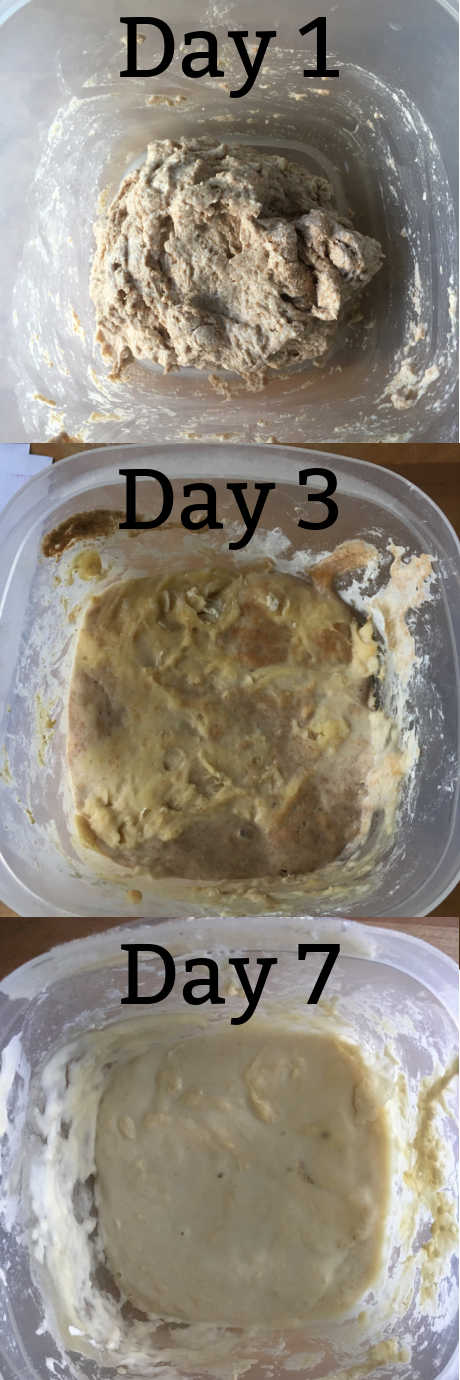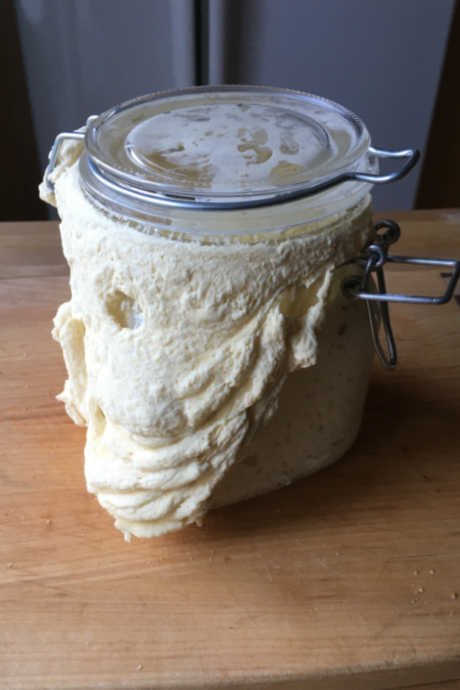Yes, Please or We'll Pass: Sourdough
Posted by Amy on Aug 5th 2020
The latest edition of “Yes, Please or We’ll Pass” is perfect for anyone who’s struggling to find yeast, but still wants to test their baking chops on bread. I’m talking sourdough, from starter, to discards, to the actual loaf; I experimented with it all. I’ll pass along a few tips and tricks (and even a failure) for this ancient baking method that often seems a little intimidating for first timers.
Sourdough: What Is It?
Sourdough can refer to both the bread itself and the starter needed to make that bread. The starter is nothing more than a combination of flour and water. But when it’s mixed, stored, and fed properly, wild yeast and good bacteria (lactobacilli) will give your bakes lift. They also provide the eponymous “sour” flavor.
How to Make a Sourdough Starter
If you’re short on time or motivation, you can order sourdough starter online. If you have a friend or family member with their own established starter, you can ask them for a bit. You can even get one from the Oregon Trail Sourdough Preservation Society, which has a starter that’s been around since 1847. (Although their starters are free, we recommend sending a donation with your request, so they can continue to share the starter). Even if you don’t order a starter, check out their site to learn even more about sourdough.
But, just like our Kombucha SCOBY, I opted to make my own. King Arthur Baking has a detailed step by step Sourdough Baking Guide. Based on hundreds of 5-star reviews, several from happy first-time sourdough makers, I decided to follow this helpful guide for my first foray into sourdough.
Sourdough: How We Made It
I started off mixing water and whole wheat flour. Yes, it does need to be whole wheat. Sourdough is a living organism, and it needs something to eat. It’s more likely to find the nutrients it needs in whole wheat flour than typical bleached all-purpose flour. The starter (henceforth known as Cyradough, because apparently naming your starter is a thing) initially looked a little scraggly. But I followed the guidance from King Arthur and made sure to incorporate every bit of dry flour.
Over the next few days, I discarded and added flour as instructed by King Arthur. Again, they emphasized what type of flour was necessary to provide the necessary nutrients for the starter. Cyradough began to look less scraggly and more dough-like, and there was a definite yeasty smell, so I knew I was on the right track.

With the King Arthur method, you’ll discard a large portion of your starter once or twice a day. As someone who hates throwing out food, I struggled with this step. Luckily, they have several recipes for using your discards. My personal favorite, the crumpets, were quick and easy to throw together for breakfast sandwiches. Several of the recipes do require a bit of planning, but you can use your morning discard for dinner’s pizza dough, and then use your evening discard for waffles the next morning.
The tip from King Arthur I found most helpful was to trust the starter, not the calendar. I keep my house on the cool side, so it took Cyradough a little longer to get going. I waited about 14 days before I felt it was ready to bake bread. It was growing quite a bit within hours of feeding, and there were lots of bubbles in the starter, plus that aforementioned yeasty smell. Solid growth is crucial, because that is what helps your bread rise.
After Day 14, I wanted to find a more permanent home for Cyradough. I picked up a flip-top jar and removed the airtight seal; if your starter can’t breathe, this can cause a blowout. Apparently the lid was still sealed too tightly, because the next morning Cyradough was trying to make a break for freedom and oozing out of the jar like an industrial accident in a superhero movie. I would advise that you look for a loose-lidded crock to store your starter.

After tidying up the mess and giving Cyradough a morning feeding, I was ready to try my hand at bread. I went with the simple No-Knead Sourdough recipe from Food52. As a novice bread baker, I love no-knead breads: lots of passive time, no complicated braiding, and you can bake in a Dutch oven. The result was a large loaf with a crispy crust and fluffy crumb. The sour flavor was not overwhelming, likely due to the newness of my starter.
Sourdough: Yes, Please
Developing a healthy starter was far more straightforward than I had expected, thanks in large part to the King Arthur guide. Making several recipes from discards also helped me get comfortable working with my sourdough starter. I’m definitely on board with the sourdough craze. Cyradough has moved into the fridge, and I’ve scaled back to weekly feedings, but I’m looking forward to testing many more sourdough bread recipes!

